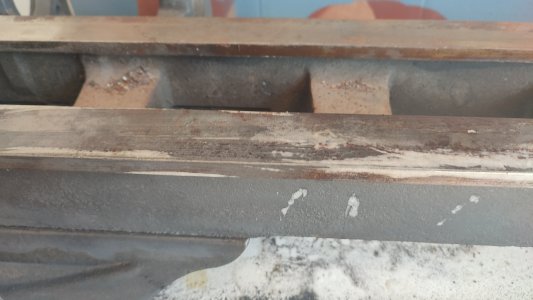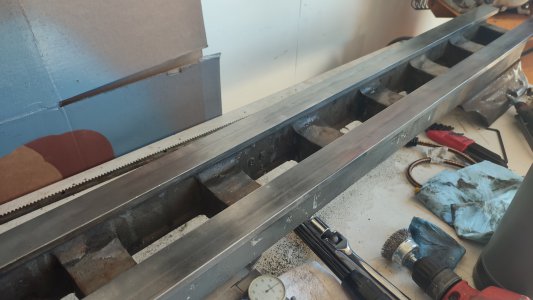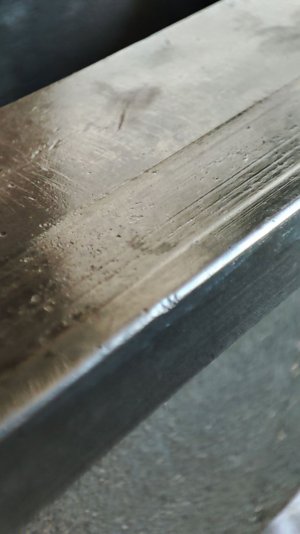- Joined
- May 3, 2020
- Messages
- 99
Hey everyone, I'm finally getting around to work on my lathe refurb again and started working on the bed today. First off, I highly recommend this krud kutter product to anyone dealing with rust, a quick 30 minute application plus a go over with a drill mounted wire brush gave me fantastic results!
Moving on to my main question, how concerning is this groove worn into the front way of the machine? Checking it with a straight edge and feeler gauge, it appears to be about .002" deep. This machine is going to be for light hobby use when (more like if!) it gets finished, so I'm not trying to achieve Swiss accuracy here, I just don't want to set myself up for problems in the future.
Moving on to my main question, how concerning is this groove worn into the front way of the machine? Checking it with a straight edge and feeler gauge, it appears to be about .002" deep. This machine is going to be for light hobby use when (more like if!) it gets finished, so I'm not trying to achieve Swiss accuracy here, I just don't want to set myself up for problems in the future.






